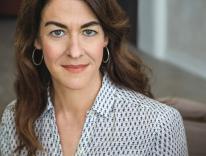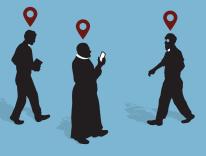I was in my office one morning last April completing a pelvic exam on a sexually active sixteen-year-old girl. I’m a family doctor in a busy private practice. As a Catholic, I have many concerns about teenagers who are sexually active, but I generally don’t ponder them during a hectic morning in the office. That April day, though, was different. As I cared for this girl, who came with her mother to discuss contraception, I wrestled with the question of how my experience as a family doctor made it difficult, if not impossible, for me to comply with the church’s teaching on contraception.
The conclave that would elect Pope Benedict XVI was in session that day, and thoughts about the current state of the church—my church—weighed heavily on my mind. I considered it ironic, perhaps a work of the Spirit, that I was faced with a clinical problem that so poignantly distilled the essence of many of the moral issues facing Catholics, especially the struggle between church authority and individual conscience. I had attended Mass earlier that morning, and remembered the day’s Gospel: “I have other sheep that do not belong to this fold. These also I must lead, and they will hear my voice, and there will be one flock, one shepherd” (John 10:16). I also remembered my pastor’s homily. He had suggested that sometimes we are called not to be the sheep, but to be the shepherd. As I recalled his words, I decided that the thirty remaining patients on my schedule would have to wait, because here before me was a lost sheep who needed a shepherd.
In fact, she could have been one of any number of young sexually active women—adolescents of thirteen, fourteen, and fifteen—who have come to me during the eleven years I’ve practiced medicine. I can still see their faces, and those, too, of their mothers, parents, or guardians who brought them to me. They (and their families) fit no stereotype. Many attended church regularly and came from intact families. Most looked better suited to running on a soccer or softball field than lying on an exam table with their legs suspended in stirrups designed for women twice their age. In most cases, the pelvic exams turned out “normal”—no evidence of anatomic abnormality, infection, trauma, or irritation. But each time I recorded the word “normal” on the patient’s chart, I asked myself if the anatomy of a sexually active thirteen- or fourteen-year-old should ever be called “normal.”
I recalled another young woman who came in to discuss contraception. She came by herself. She assured me that her fifteen-year-old boyfriend never physically abused her. However, she did say he yelled at her because he was jealous of her friendship with another boy. I tried, perhaps in vain, to help her understand that having sex at a young age can bring about this kind of immature behavior. I wanted her to understand the sacramental nature and symbolism of sex. In my own marriage, I have experienced what the church means by the transcendent aspects of sexuality; for my husband and me, sex is an expression of self-giving love. I wanted my patient to understand that sex could be like this. I wanted her to realize that in her experience of sex and sexuality, she and her boyfriend were selling themselves short.
During our conversation, the young woman revealed that her stepfather routinely disciplined her by punching her. She admitted that she was belligerent toward him at times, and hinted that this might in some way justify his violence. I told her that punching was never an appropriate form of parental discipline. Privately, I prayed that one day she would realize that she was deserving of love and worthy of better treatment. I hoped that, in some way, I could help her understand this. Perhaps by my willingness to spend time with her, to listen to what she was thinking and feeling, she’d begin to realize that she mattered. Perhaps through my ongoing care she would come to understand the gospel message. All I could do practically on that particular day, however, was to call Child Protective Services to inform them that, in my judgment, her stepfather’s “discipline” had crossed the line into abuse. I grieved over the dysfunction in her family. I also gave this young woman a prescription for oral contraceptives.
As I did so, though, I told her that abstinence really was the best option. I admit feeling a little silly in doing so. I had cared for this patient since she was eight years old. I had been counseling her about abstinence—and also about substance abuse and violence prevention—for just as long. (With parental consent, I begin to educate my young patients and their parents about these issues at a very early age.) At this point, it was clear that the abstinence message had not worked. I hoped, though, that one day she would remember our conversations and be persuaded to change her behavior. As I handed her the prescription, I wondered whether giving her contraceptives was a sin or if refusing to prescribe them would actually be more damaging.
I remembered another adolescent, in a pink tank top showing cleavage. She looked much older and more world-worn than her fifteen years. Her father was worried that she’d get pregnant. She was worried about her stretch marks. I was worried about her emotional and spiritual well-being. Her father knew of her promiscuous behavior. He was furious with her and left the room so I could talk to his daughter in private. As I listened to her, I remembered a picture she drew of me when she was eleven. She was into bohemian garb at the time and drew me in a long dress with a large flower on the front of it. In the picture, crayon-colored hoop earrings and poker-straight hair framed my smiling face. Four short years ago she was carrying a twenty-four pack of crayons in her backpack. Now she was requesting a twenty-eight pack of oral contraceptives for her purse.
As I struggled to make some sense of this encounter, I thought of Jesus saving the woman who was about to be stoned. Perhaps she, too, was fifteen with an angry father. Jesus did not chastise the woman. He advised her to sin no more and sent her on her way. I have never had to save someone from a stoning. Perhaps, though, each time I serve as a mediator between parent and child, or create a safe space for a patient to ask questions and consider her choices, I help to free someone from misunderstandings. Perhaps, more important, I communicate that they matter more than the choices that they make and that they are worthy of compassion and acceptance. Ultimately, it may be this experience—this relationship—that sets them free to make sound decisions and to “sin no more.”
Many years ago, I was taught that to use or prescribe contraception was a serious sin. In fact, I almost did not apply to medical school because I knew this teaching would conflict with my duties as a doctor. Ultimately, I could not abandon what I recognized to be my vocation. I prayed about my doubts, and applied to medical school.
Over the years, I have studied and prayed often about whether I should be prescribing contraception to teenagers. I still struggle with the issue each day, but I have concluded that I must follow my informed conscience. I have witnessed the suffering that patients experience as a result of sexually transmitted diseases, abortion, and teenage pregnancy. I have tried to comfort them in their grief and pain. Some of my patients choose to be sexually active outside marriage. I know that contraception and condom use can prevent some of the consequences of this sexual activity. In my experience, withholding contraception does not stop adolescents from engaging in sexual activity. Many will continue to have intercourse or, in some cases, participate in an activity that approximates sex but stops short of the actual act in an attempt to prevent pregnancy.
I embrace and adhere to the church’s teaching on marriage and sexual morality in my personal life. In fact, my husband and I do not use artificial contraception. But I do not think that I, as a doctor, can dictate the choices of my patients. Jesus, as I understand him, does not simply dictate; he educates, challenges, and invites. I seek to do the same, to point my patients in the right direction. I should note, though, that there are cases in which I cannot in good conscience make certain medical recommendations. I will not prescribe the so-called morning-after pill, the contraceptive designed to prevent a fertilized egg from implanting in the uterus.
Each time I prescribe oral contraceptives or counsel a young woman on matters of sex and sexuality, I ask God for mercy. Am I, in my desperation to protect these children from greater harm, leading them astray? I consider the patients’ medical needs and the choices that they have already made by the time they come to me. I grieve over the dysfunction in their families and the challenges facing their parents. I struggle with the conflict between my responsibilities as a Catholic and my conscientious decision to prescribe contraception. As an active member of the eucharistic community, I know that I’m not supposed to prescribe contraception, and that I’m bound to encourage abstinence in these situations. I also know that sometimes patients choose options that we counsel them to avoid. Should I refrain from participating in the liturgy or receiving the Eucharist, the very sustenance of my life? Should I refrain from doing pelvic exams on sexually active unmarried women?
It was with these truths, questions, and conflicts rumbling around in my heart that I heard the news of our new pope’s election. I was standing in the lab in my office at the time, and slid down the wall to a sitting position. A staff member commented that the last time I had done this was on 9/11. Briefly, I retreated to my office to “sit with it.” I thought of my young patients. I affirmed in my heart my vocation to be a doctor, a healer, and an advocate for my patients. A feeling of love for the church, a sense of being rooted in her wisdom and her eccentricity, her divinity and her humanity, welled up in my heart. She is mine and I am hers. I cannot and will not leave. The terms “unsound doctrine” and “moral relativism” drifted across my mind, yet my heart and my conscience rejected the notion that I am a “dissenter.”
For a moment, I wondered if my decision to prescribe contraception would cause me to be excommunicated. Then I remembered Jesus’ words: “for I did not come to condemn the world but to save the world” (John 12:47). It is important to keep this in mind in the practice of medicine. To condemn someone for their failures can destroy any hope of recovery. It can diminish the chance that one will, over time, change one’s behavior. Jesus taught; he seldom condemned. It was to his doubting, confused, and frightened disciples, first a woman and later the twelve, that he revealed his risen self. He did not chide or admonish them for abandoning him, for denying and misunderstanding him.
As I reflected on these matters, I prayed for God’s mercy—on me, my patients, the church, the new pope, and the world. I placed my stethoscope around my neck, picked up my prescription pad, and walked down the hall to perform another pelvic.
Some personal details in this article have been changed to protect patient confidentiality.
Please email comments to [email protected] and join the conversation on our Facebook page.
Previous Story
Conscience
Next Story
No Easy Gait


